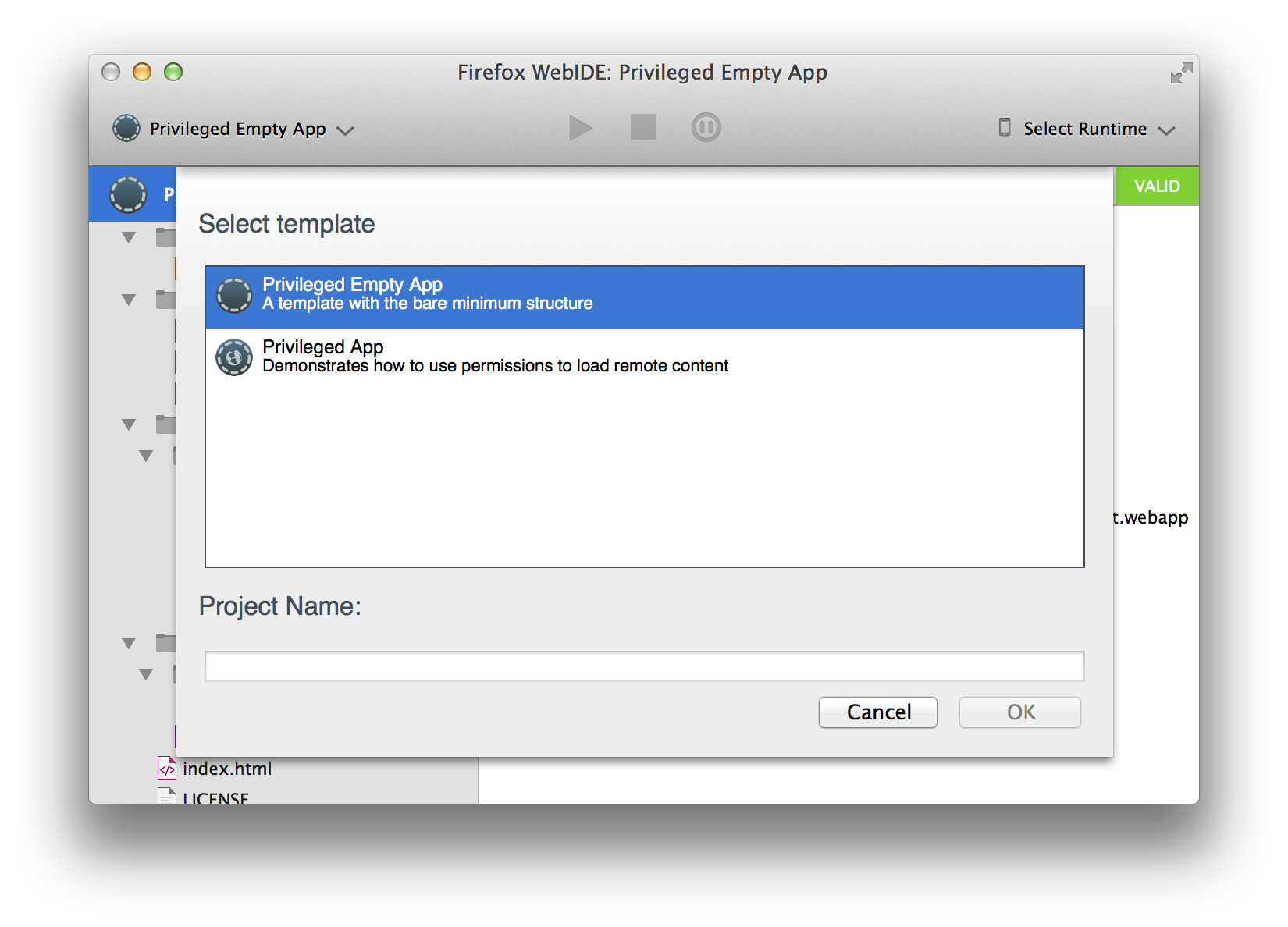Bug 1154335 - Hello world bump |
||
|---|---|---|
| assets | ||
| templates | ||
| .gitignore | ||
| .gitmodules | ||
| README.md | ||
| build.js | ||
| config.local.json | ||
| package.json | ||
| upload.js | ||
README.md
mortar+devtools
One project to build them all, and in the darkness distribute and bind them to your devtools.
Now seriously. This is a project to build the template + metadata files we upload to a CDN so that Firefox DevTools' WebIDE can present a nice list of templates for you to kick start your app.
I'm in! How?
git clone https://github.com/mozilla/mortar-devtools.git --recursive
cd mortar-devtools
npm install # make sure all dependencies are installed
node build.js
This generates a dist folder with the content that WebIDE will present when you click "New App". But this has to be uploaded somewhere.
To upload to a server, ensure you have a config file with the proper settings in place. A sample config.local.json file that you can use as a base is provided:
cp config.local.json config.json
Edit it to suit your needs and then you can run the script that automatically uploads things to the server:
node upload.js
The provided script assumes that you have uploaded a public key to the other server and that you can use SCP so it's a very specific example. You can also upload the entire contents of the folder with any other method (e.g. with an SFTP/S3 client).
We upload it to a CDN for production, but to test with your own server you can change the URL that WebIDE pulls the JSON file with templates info from. Go to about:config and edit devtools.webide.templatesURL to point to the URL of the JSON file in your server.
You can also pass in options from the command line. These will override the values in the config.json file. It can be useful if you want to experiment with different settings but do not want to edit the config file. For example:
node build.js --remote-directory http://somewhere/else/
will use that setting temporarily.
Directory structure in templates/
For each template we want to include, we'll create a directory under templates.
Then add a git submodule for the template in a src subdirectory. For example, this is how you would add the app-stub template:
cd mortar-devtools/templates
mkdir app-stub
cd app-stub
git submodule add https://github.com/mozilla/mortar-app-stub.git src
An icon for the template is required too (this will be shown in the WebIDE when listing the available templates). Icon format is PNG.
Pending stuff
- Generate JSON for devtools
- Where does the data for each entry come from? title, description
- Each template folder?
- Where does the data for each entry come from? title, description
- Probably refactor common functions that will arise as more templates are added
- Things to test
- For each template in templates/ there must be a generated ZIP file
- Each ZIP must contain a valid project
- how can we say something is "a valid project"?
- It can be unzipped and has > 0 files
- MD5?
- how can we say something is "a valid project"?
- How do we get this into a public server?
- check in the dist files
- or make a task to upload to some FTP
- then also need the MD5
